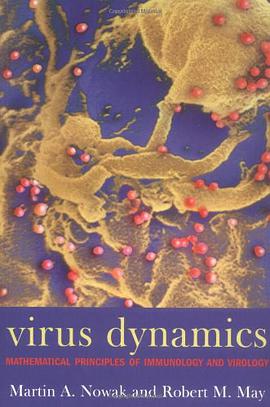Virus dynamics
Douban
Mathematical principles of immunology and virology
Martin A. Nowak / Robert May
Sinossi
We know, down to the tiniest details, the molecular structure of the human immunodeficiency virus (HIV). Yet despite this tremendous accomplishment, and despite other remarkable advances in our understanding of individual viruses and cells of the immune system, we still have no agreed understanding of the ultimate course and variability of the pathogenesis of AIDS. Gaps in our understanding like these impede our efforts towards developing effective therapies and preventive vaccines. Martin Nowak and Robert M May describe the emerging field of theoretical immunology in this accessible and well- written text. Using mathematical modelling techniques, the authors set out their ideas about how populations of viruses and populations of immune system cells may interact in various circumstances, and how infectious diseases spread within patients. They explain how this approach to understanding infectious diseases can reveal insights into the dynamics of viral and other infections, and the interactions between infectious agents and immune responses. The book is structured around the examples of HIV/AIDS and Hepatitis B virus, although the approaches described will be more widely applicable. The authors use mathematical tools to uncover the detailed dynamics of the infection and the effects of antiviral therapy. Models are developed to describe the emergence of drug resistance, and the dynamics of immune responses, viral evolution, and mutation. The practical implications of this work for optimisation of the design of therapy and vaccines are discussed. The book concludes with a glance towards the future of this fascinating, and potentially highly useful, field of study.